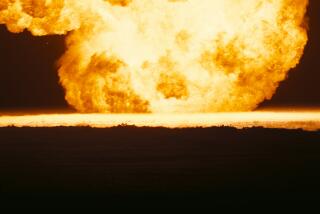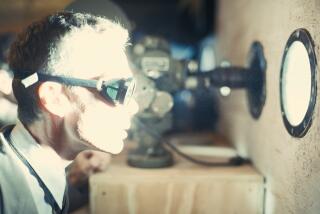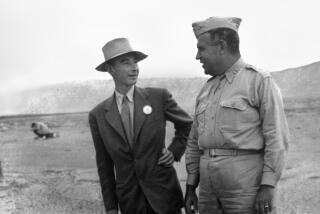A new bomb and its grandfather
A 77-year-old retiree, known as an eccentric genius but in declining health, played an unexpected role over the last year in designing the nation’s new hydrogen bomb.
Seymour Sack, a legend among nuclear weapons designers, was called in from his home in the hills above Berkeley into his old offices in a high-security zone of the Lawrence Livermore National Laboratory.
Sack’s role illustrates the predicament facing the U.S. nuclear weapons complex in an era without nuclear testing: Its newest hydrogen bomb springs from a 25-year-old design whose architect ventures out of his house as seldom as he can.
“I do as little as possible these days,” Sack said. “I’m not feeling too well.”
If the new bomb enters production and is deployed atop missiles on nuclear alert, as the Energy Department hopes, it will have to navigate a careful path through serious technical issues and political attacks.
The Navy will have to be convinced that the bomb will blow up reliably without a new test to prove it. And Congress will have to be persuaded that thousands of existing bombs will become obsolete. And arms control advocates who fiercely oppose the program will have to be outmaneuvered.
But the bomb, known as the reliable replacement warhead, has progressed much further and faster than any new nuclear weapons program since the end of the Cold War.
On Friday, the Livermore lab was selected over Los Alamos National Laboratory to design the weapon and begin a 12-month effort to assess its cost, schedule and scope. If all goes well, the new weapon could be mounted on missiles aboard the Navy’s Trident submarines by 2012.
Livermore won the competition with a warhead design based on something Sack developed in the 1980s. At the time, most nuclear bombs were designed to be as small and light as possible, and that made them less reliable.
Defense and Energy department officials now say those aging weapons might not work at some point and should be substituted with the reliable replacement warhead. But without a new test -- the U.S. swore off nuclear testing in 1992 -- the new weapon would have to go on alert status.
Sack contends the design, tested in the 1980s, is still reliable.
“You will end up with a very reliable weapon,” he said in an interview Friday. “It doesn’t matter that the tests were done 25 years ago.”
When Sack was given the prestigious Enrico Fermi Award in 2003, his low-profile role in the world of nuclear arms was finally recognized.
“He is more responsible than any other individual for the fundamental design and intrinsic safety of the modern U.S. deterrent,” said Livermore nuclear weapons chief Bruce Goodwin.
Sack was known at the labs as a salty guy who was methodical and conservative.
“His eccentricity, if that is the word, is not how some people would think,” said Philip Coyle, former associate director at the lab. “He did not behave oddly. His eccentricity was that he didn’t suffer fools gladly.”
Asked how he felt about his nuclear bomb design being resurrected for the 21st century, Sack replied sharply, “It is not like it was resurrected from a garbage bin.” He said he did some kibitzing with younger scientists when he was shown their derivation of his design.
“Some of my detailed recommendations were ignored,” said Sack, a native of New York City.
Sack said Defense and Energy officials had offered numerous justifications for the new bomb but still hadn’t made the purpose clear.
Indeed, Energy and Defense officials have cited more than half a dozen reasons to build the bomb, saying it will improve reliability, safety and security, and allow for reductions in the number of reserve weapons.
It is also supposed to help train a new generation of nuclear scientists.
But some key members of Congress and many nuclear arms groups have dismissed the laundry list of arguments for the entire program, saying it is unnecessary and could trigger a new arms race.
Coyle said the use of the Sack design conveys an intrinsic problem facing nuclear weapons labs. “How do they keep nuclear design skills current when the best thing they have is from this guy in his 70s in declining health? The people who know how to do this are old.”
ralph.vartabedian @latimes.com
More to Read
Sign up for Essential California
The most important California stories and recommendations in your inbox every morning.
You may occasionally receive promotional content from the Los Angeles Times.











